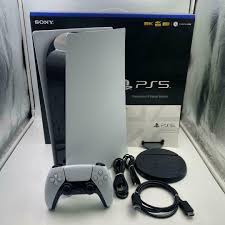This is a challenging subject. We all know how dangerous sports can be. Almost anybody who has participated in sports for a long period would tell you about how they have been wounded in some way. It's just the way sports are. Well, if you think about it, just being alive is a risk.
However, some sports, particularly extreme sports, offer a level of danger that is unmatched by anything else. The difficult thing is determining which are the most harmful. If you look at the total number of injuries, you'll notice that cheerleading and fishing are both in the top ten. Isn't it surprising? When you consider the number of people who participate in a sport, it may appear that skydiving is a safer sport than football. Climbing Everest ranks first in terms of deaths, with nearly 1 in 10 people dying. That is if you consider it a sport rather than a suicide attempt.
It's difficult to compile an accurate list of the world's most dangerous sports with pieces of statistical evidence scattered around the internet and no database to concentrate everything for a long enough period of time. And, to begin with, how do you define danger? Based on these facts, we've compiled a list of the 15 Most Dangerous Sports in the World, according to how dangerous the activity is and how many chances there are of dying while participating in it.
So here is our ranking of the world's 15 most dangerous sports:

Football is one of those really dangerous games, which may be difficult to believe. Most of us no longer consider it dangerous, but if you add up all of the victims that American football has claimed over the years, you'll get the picture.
Football used to be even riskier than it is now, with early games leaving dozens dead on the field. Because the protective gear was primitive compared to what you see now, head-to-head collisions were frequently the cause of most deaths and life-altering injuries. Broken bones, neck and head injuries, and numerous additional concussions are still common in football today.
14. Free Diving

While scuba diving is considered to be riskier than contact sports due to its numerous dangers, there are a few other related disciplines that are even riskier. One of them is free diving.
This sport entails diving as deep as possible without the use of scuba diving's breathing equipment and gas. While freediving is absolutely beautiful and clean because it involves diving without equipment in the most unnatural environment for humans, typically deep down ocean holes, it does have a cost. There were 417 recorded freediving accidents between 2006 and 2011, with 308 of them being fatal.
13. Bull Riding
Bull riding may not be considered an extreme activity, but it is certainly hazardous. You either walk out on your own legs or take your next ride in an ambulance or a hearse, as some bull riders describe it. That's because a fallen rider can be crushed under the weight of one of those bulls, which can weigh up to 1800 pounds. You can imagine the consequences.
12. White Water Rafting
With white water rafting, we're moving into more adrenaline junkie territory on our list. Riding an inflatable boat down a river may not appear dangerous at first, but what if we factor in the wild waters of some rivers, as well as the dangers of colliding with rocks or becoming stuck under the boat or beneath rocks? White water rafting accidents frequently result in broken bones and drowning.
11. Rugby
Rugby has more broken bones, torn ligaments, and dislocated shoulders than American football, and over a dozen players have died since 2001 due to the lack of protective equipment.
10. Big Wave Surfing
Surfing looks fun, but the grandmasters of the sport are more interested in large wave surfing. With waves that reach frightening heights, brave surfers must be towed onto the waves in order to catch them, and that's when the fun begins. However, the more pleasure you have, the greater the risk, because surfing a 100-foot wave is not without danger.
Being dragged under such a wave is no joke, as drowning and being slammed into underwater rocks are two of the sport's major dangers.
9. Downhill Mountain Biking

When it comes to taking a pleasant excursion into the wilderness, many individuals prefer mountain biking. Downhill mountain biking is the extreme version, which involves speeding down a steep and narrow mountain trail through precipices, rock formations, and trees. Or as enjoyable as possible. However, having too much fun can lead to serious fractures, brain and spinal injuries, internal bleeding, organ damage, and even death.
Consider alpine skiing to better comprehend the dangers. According to statistics, one injury occurs for every 1,000 skiers. When it comes to downhill mountain biking, one out of every ten riders sustains an injury. That seems a lot more dangerous, doesn't it?
8. Auto Racing
Car racing is one of the most dangerous sports, with hundreds of kilograms of metal wrapped around you, speeds of up to 150 miles per hour on hard asphalt, and a 1 in 100 chance of dying in a crash.
You could imagine that technology has improved through time, making the suits and helmets safer, and thus the driver's overall safety in a race car, however technology works both ways. Cars are much faster than previously, and accidents are far more violent. There have been more than 40 fatalities on race tracks around the world since 2001.
7. Motorbike Racing
If you think vehicle racing is scary, try motorcycle racing, where the rider is not secured by a solid cage-like race car are. Then there's the race down a track at 120 mph, attempting to be the first to cross the finish line.
The Isle of Man Tourist Trophy, which is regarded as the most dangerous race in the world, is also available if regular motorcycle races aren't enough. Racing at extreme speeds along public roads while dodging obstacles, stone walls, and residences only feet away is likely to send shivers down many people's spines and provide the perfect thrills to a select few.
6. Heli-Skiing
What happens when a ski resort is no longer sufficient? Oh well, you pay a helicopter pilot to take you to some of the world's most dangerous snow-capped peaks and then ski down the entire mountain while attempting to stay alive till the end.
For winter adrenaline addicts, heli-skiing is perhaps the most intense sport available. We understand that many people are afraid of flying, particularly in a helicopter, but this is the safest – and least enjoyable – component of the sport. The best part is skiing downhill. That is, if you don't die in an avalanche, freeze to death in poor weather far from civilization, or fall over a cliff in the meantime.
5. Swooping (Skydiving discipline)
Skydiving is certainly an extreme sport, but few people are aware that there is a relatively new discipline in skydiving known as swooping. People who have tried it say it's a lot more exciting and fun than ordinary skydiving. If leaping out of planes is considered normal.
Swooping, also known as canopy piloting, requires skydivers to go as near to the ground as possible while flying as quickly as possible. There are currently numerous swooping tournaments held across the world, as well as numerous injuries and fatalities, as one might expect from such a sport. Swooping has sparked disagreement even within the skydiving community around the world, with many people debating whether it is a legitimate sport or just simple foolishness.
Whatever side you're on, swooping is clearly one of the most dangerous things you can do today.
4. Wingsuit Flying
The majority of people have probably never heard of wingsuit flying, but it has come a long way since its inception in the mid-1990s. Wingsuit flying is an extreme sport in which pilots jump from a plane or cliff wearing a customized jumpsuit that helps them to gain more lift and glide horizontally in the air. The attained rate of descent is approximately 80% lower than a standard skydive, allowing for longer and farther flights.
That is the sole reason why skydivers and BASE jumpers all over the world have embraced it. Wingsuiters are pushing the boundaries of what a human person is capable of, from setting new distance records and flying in formation to flying as near to mountainsides, rock cliffs, and trees as possible. However, these bold ventures do not always succeed, and the sport suffers as a result. Since 2002, there have been 162 deaths recorded, with the most recent two occurring in December 2018.
3. Free Solo Rock Climbing
If carrying a parachute on your back provides you the best chance of surviving some extreme fun, free soloing does not. To begin with, rock climbing is a difficult, demanding, and dangerous sport. Even with all the ropes, harnesses, and protective equipment, there aren't many individuals who do it for those reasons.
Then there's free solo climbing, which requires no climbing equipment other than climbing shoes and chalks for the ascent. Without ropes, harnesses, or any other safety equipment, a climber's every mistake can result in death or, at the very least, major life-threatening injury. Climbers with a high profile who attempt free soloing rely only on their ability.
The simplicity and great concentration required are two of the key reasons they do it. Consider it a form of meditation, but one that is extremely perilous.
2. High Altitude Mountaineering
High altitude mountaineering ranks second on our list of the 15 most dangerous sports in the world, with a one-in-ten probability of dying while attempting to conquer the Himalayas' highest peaks. Since the first climbing attempt in 1922, there have been 297 recorded deaths on Everest alone.
The dangers of ascending high mountains are primarily due to the shortage of oxygen at such high elevations. Humans were not designed to exist in such an environment. To give you an idea, if you put a person above 8,000 meters (26,000 feet) above sea level, he or she would die in less than 2 minutes owing to a lack of oxygen. In mountaineering jargon, this is known as the death zone - the elevations beyond which human life is impossible. Then there are the avalanches, falls, crevasses, ice breakdown, frostbite, and other medical disorders that occur as a result of the frequently severe weather.
1. B.A.S.E. Jumping
Although there are many risky sports, base jumping appears to be claiming more and more victims with each passing year since its beginning. And, if you think about it, it's quite obvious from the start that jumping off a cliff or from the top of a large structure isn't going to end well.
B.A.S.E. stands for Building, Antenna, Span, and Earth, which translates to jumping from anything high enough for a parachute to fully open before impact. Isn't it just that simple?
The sport attracts many thrill seekers from all over the world and has likely claimed the most lives in the shortest amount of time, with the death toll rising year after year. The BASE Fatality List (BFL), an unofficial chronicle of BASE jumping fatalities kept by the community since 1981, shows that there have already been 362 deaths. While many people believe that the first years of a sport are the most dangerous, BASE jumping is the exact opposite. The year with the most deaths was 2016, with 37, followed by 32 in 2018.























